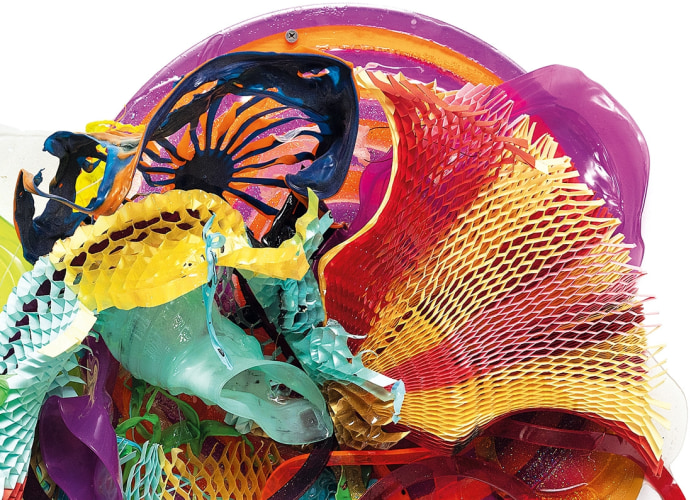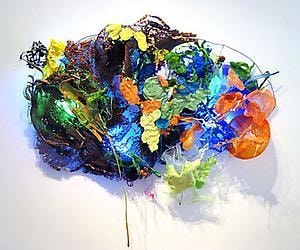
Judy Pfaff
Robischon Gallery
20 September - 22 December 2012

By Michael Paglia The visual arts in Denver reached an obvious high point in the fall of 2006, when the Denver Art Museum opened the Hamilton Building. But some runners up, date-wise, would have to include the following year, when MCA Denver moved into its new building, and last season, when the Clyfford Still Museum opened. But even in this heady context, the present season strikes me as unusually strong. True, there aren't any museums opening, but we do have a homemade blockbuster, "Becoming Van Gogh," which opens Sunday. In a sense, this exhibit overshadows everything else, but there are plenty of other notable events worth paying attention to. Foremost among those is "Frank Sampson: New Paintings," the inaugural show at the new Golden Triangle location of the Sandra Phillips Gallery. There there's Walker Fine Art, which just celebrated ten years of being in the business of presenting interesting contemporary art shows. And finally, Mary Voelz Chandler, the longtime art and architecture writer at the now-defunct "Rocky Mountain News," was given the prestigious DAMKey award by the support group DAM Contemporaries for her outstanding contributions to the visual-arts community. Chandler was clearly moved by the heartfelt salutes from curator Gwen Chanzit and museum director Christoph Heinrich. I think I speak for everyone when I say that her always informative columns are sorely missed. Now, on to the shows at hand. There's definitely been a buzz about "Judy Pfaff" at Robischon Gallery, a spectacular in-depth solo stretching into several of the exhibition rooms at the remarkably capacious venue. It is every bit as gorgeous as "El Anatsui" over at the DAM - and that's really saying something. Installation art goes way back in the history of modernism, with several artists working in the medium as early as the 1920's - think Kurt Schwitters - but it wasn't until the '70's and '80's that it became a major art form. Pfaff, who received her MFA from Yale in 1973, was there on that ground floor, and was immediately recognized as one of the masters. She's also been a source of inspiration for many other artists attempting to fill spaces in novel ways, including onetime students Ann Hamilton and Jessica Stockholder, who both owe more than a little to their former teacher. Of course, there have been many others who didn't take her classes but were struck by her example. As the Robischon show unfolds, viewers in the front space are confronted by all-over abstract wall-relief sculptures that literally glow, due to the incorporation of fluorescent lights. The illuminating tubes are essentially hidden behind accumulations of honeycomb cardboard, expanded foam and all manner of plastics, much of it stretched into organic shapes. Many also incorporate ready-made Chinese lanterns, which work really well with the overall expressionist compositions. The atmosphere these pieces create in the gallery is magical. One of Pfaff's most interesting gifts is the way she appears to be randomly assembling objects and yet is able to create compositions that are strong and coherent. And that's not because she's stumbled onto a formula in which everything takes on a similar form; instead, she employs her accomplished sense for composition in a wide range of unexpected and inventive ways. In "And to the Peacock - Beauty," it's a tight conglomeration of materials. In the nearby "My Second Dream," it's a dynamic horizontal. Some pieces, like "The Frightening Sound of Munch, Munch, Munch," seem to sprawl across the wall in complex and indescribable shapes. These recent Pfaffs are part of a series meant to refer to the Sanskrit writings known as the Jataka Tales, which tell the stories of the many births of the Buddha. Given that Pfaff's best-known work is about space itself, Robischon registrar Debra Demosthenes has linked this work to "the culture of place" and has written that the series was inspired by Pfaff's travels to India, China and Japan. This is Pfaff's fourth Robischon solo - I've seen all of them - and as great as the other three were, this one, with a little over a week left in its run, struck me as being not only the best of the lot, but by far the most important because of the obvious significance of the works included. The Pfaff solo is bracketed by two others - a small show, Ana Maria Hernando, and a larger one, Katy Stone.